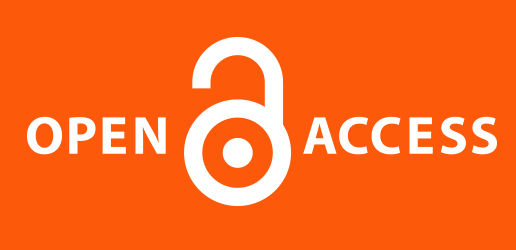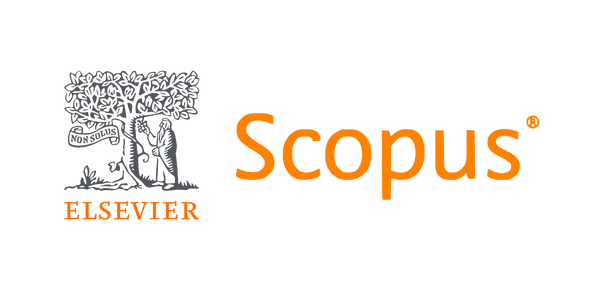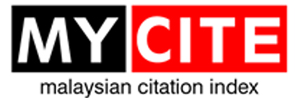Nursing Students' Readiness to Apply Flipped Learning: A Cross-Sectional Study
DOI:
https://doi.org/10.31674/mjn.2025.v16i04.003Abstract
Background: Flipped learning (FL) is a contemporary teaching approach that offers numerous benefits, particularly in the complex nursing educational environments. Assessing students' readiness for FL is essential to ensure its successful and satisfactory adoption. Objectives: To assess the readiness for implementing FL pedagogy in Egypt, particularly among nursing students, and to identify the factors influencing its adoption. Methods: The current study employed a cross-sectional descriptive research design, recruiting 372 nursing students from three different universities in Egypt to improve the generalizability of the findings. These institutions included Cairo University, Helwan University, and Misr University for Science and Technology. Data were collected using a self-administered questionnaire titled 'Nursing Students' Readiness for FL. Results: 75.2% of student’s demonstrated moderate (above average) readiness, with an overall mean readiness score of 64.8%. Technical readiness was the highest (74%), while environmental readiness was the lowest (53.6%). There was a significant correlation between the readiness domains (p< 0.001). Academic level (B = 2.205, p<0.001) and GPA (B = 5.705, p< 0.001) were influencing factor of readiness, with higher academic levels and GPAs linked to increased readiness. Conversely, gender, age, and university affiliation were not significant influencing factors. Conclusion: Nursing students demonstrated above-average readiness for adopting FL. The implementation of FL shows great potential, particularly if more attention is given to improving access to e-learning resources, providing technical support for students, and raising awareness among freshmen and those with lower academic achievement regarding FL and its benefits.
Keywords:
Educational Pedagogy, Flipped Learning, Nursing Students, ReadinessDownloads
References
Ahmad, C. V. (2021). Causes of students’ reluctance to participate in classroom discussions asean journal of science and engineering education. ASEAN Journal of Science and Engineering Education, 1(1), 47–62. https://doi.org/10.17509/ajsee.v1i1.32407
Ang, K. C. S., Afzal, F., & Crawford, L. H. (2021). Transitioning from passive to active learning: Preparing future project leaders. Project Leadership and Society, 2. https://doi.org/10.1016/J.PLAS.2021.100016
Baig, M. I., & Yadegaridehkordi, E. (2023). Flipped classroom in higher education: a systematic literature review and research challenges. International Journal of Educational Technology in Higher Education, 20(1), 1–26. https://doi.org/10.1186/s41239-023-00430-5
Baker, C., Cary, A. H., & da Conceicao Bento, M. (2021). Global standards for professional nursing education: The time is now. Journal of Professional Nursing, 37(1), 86–92. https://doi.org/10.1016/J.PROFNURS.2020.10.001
Bergmann, J., & Sams, A. (2012). Flip your classroom: reach every student in every class every day. Washington, DC: International Society for Technology in Education. Retrieved from:https://www.rcboe.org/cms/lib/ga01903614/centricity/domain/15451/flip_your_classroom.pdf. Accessed on 23rd March, 2024.
Cho, M. K., & Kim, M. Y. (2021). Factors Influencing SDL Readiness and Self-Esteem in a Clinical Adult Nursing Practicum after Flipped Learning Education: Comparison of the Contact and Untact Models. International Journal of Environmental Research and Public Health, 18(4). https://doi.org/10.3390/IJERPH18041521
Elhabashy, S., & Moawad, A. (2024). Effect of self-directed versus traditional learning model on nurses’ airway management competencies and patients’ airway-related incidents. BMC Nursing, 23(1), 1–11. https://doi.org/10.1186/s12912-024-02232-0
Eustaquio, Ma. T., & Gannaban, G. (2024). Students’ readiness and attitudes on blended learning: basis for the development of a flipped-classroom language material. International Journal of Arts, Sciences and Education, 5(2), 241–257. Retrieved from: http://www.mail.ijase.org/index.php/ijase/article/view/360 , Accessed on 22nd June 2024.
Han, S. (2022). Flipped classroom: Challenges and benefits of using social media in English language teaching and learning. Frontiers in Psychology, 13. https://doi.org/10.3389/fpsyg.2022.996294
Hao, Y. (2016). Exploring undergraduates’ perspectives and flipped learning readiness in their flipped classrooms. Computers in Human Behavior, 59, 82–92. https://doi.org/10.1016/J.CHB.2016.01.032
Humrickhouse, E. (2021). Flipped classroom pedagogy in an online learning environment: A self-regulated introduction to information literacy threshold concepts. The Journal of Academic Librarianship, 47(2). https://doi.org/10.1016/J.ACALIB.2021.102327
Jiang, Y. C., & Jong, S. Y. (2020). Learner Preparedness in Flipped Classroom: A Case Study of a Flipped Postgraduate Course. Proceedings - 2020 International Symposium on Educational Technology, ISET 2020, 57–61. https://doi.org/10.1109/ISET49818.2020.00022
Luo, S., & Gan, Z. (2022). Validation of a measure of flipped English learning readiness and examination of its relationships with instructional practices, learning self-efficacy, and learning beliefs. Frontiers in Psychology, 13. https://doi.org/10.3389/fpsyg.2022.846781
Masruddin, Hartina, S., Ahkam Arifin, M., & Langaji, A. (2024). Flipped learning: Facilitating student engagement through repeated instruction and direct feedback. Cogent Education, 11(1). https://doi.org/10.1080/2331186X.2024.2412500
Ni, Z. H., Huang, J., Yang, D. P., & Wang, J. (2024). Nursing students’ experience of flipped classroom combined with problem-based learning in a paediatric nursing course: A qualitative study. BMC Nursing, 23(1), 1–9. https://doi.org/10.1186/s12912-024-01744-z
Polat, E., Hopcan, S., & Arslantaş, T. K. (2022). The association between flipped learning readiness, engagement, social anxiety, and achievement in online flipped classrooms: A structural equational modeling. Education and Information Technologies, 27(8), 11781–11806. https://doi.org/10.1007/s10639-022-11083-8
Rahman, A. A., Aris, B., Rosli, M. S., mohamed, h., abdullah, z., & zaid, n. m. (2015). significance of preparedness in flipped classroom. Advanced Science Letters, 21(10), 3388–3390. https://doi.org/10.1166/ASL.2015.6514
Sabry, A. (2024). Evolution of nursing education and challenges facing nursing education in Egypt. Egyptian Journal of Nursing and Health Sciences, 0(2). https://doi.org/10.21608/EJNHS.2024.378917
Shanmugapriya, K., Avudaiappan, S. L., Zayapragassarazan, Z., & Rani, N. V. (2023). Assessment of readiness toward flipped learning among novice nursing students on fundamental nursing care in Puducherry, South India. Cureus, 15(6). https://doi.org/10.7759/CUREUS.40709
Shi, Y., Ma, Y., MacLeod, J., & Yang, H. H. (2020). College students’ cognitive learning outcomes in flipped classroom instruction: A meta-analysis of the empirical literature. Journal of Computers in Education, 7(1), 79–103. http://dx.doi.org/10.1007/s40692-019-00142-8
Sınıf, T.-Y., Çevrimiçi, Y., Hazır Bulunuşluğu, Ö., Dönemi, P., & Sonrası, V. (2023). During and After the Pandemic: Online Learning Readiness in Flipped Classroom Approaches, 13, 380–389. https://doi.org/10.5961/higheredusci.1248462
Van Alten, D. C. D., Phielix, C., Janssen, J., & Kester, L. (2020). Self-regulated learning support in flipped learning videos enhances learning outcomes. Computers & Education, 158. https://doi.org/10.1016/J.COMPEDU.2020.104000
Youhasan, P., Chen, Y., Lyndon, M., & Henning, M. A. (2021a). Assess the feasibility of flipped classroom pedagogy in undergraduate nursing education in Sri Lanka: A mixed-methods study. PloS One, 16(11), e0259003. https://doi.org/10.1371/JOURNAL.PONE.0259003
Youhasan, P., Chen, Y., Lyndon, M., & Henning, M. A. (2021b). Exploring the pedagogical design features of the flipped classroom in undergraduate nursing education: A systematic review. BMC Nursing, 20(1), 1–13. https://doi.org/10.1186/s12912-021-00555-w
Published
How to Cite
Issue
Section
License
Copyright (c) 2025 The Malaysian Journal of Nursing (MJN)

This work is licensed under a Creative Commons Attribution-NonCommercial-NoDerivatives 4.0 International License.



































